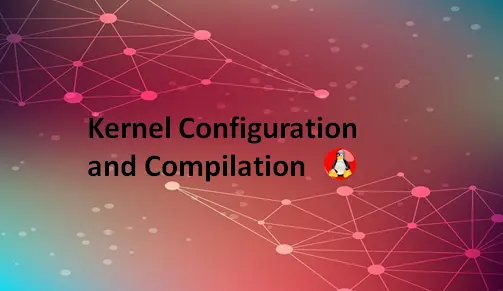Explanation of what the Linux kernel is and its importance to the OS
The Linux kernel serves as the central component of the Linux operating system, governing all hardware and software resources. It performs a range of critical functions, including managing memory, scheduling processes, handling system calls and controlling input/output operations. Essentially, the kernel serves as a crucial intermediary between a system’s hardware and software, facilitating their interaction and enabling the computer to function effectively.
The operation of the operating system depends on the kernel. Applications cannot run and the system cannot boot without the kernel. Because of this, comprehension of the Linux kernel is essential to comprehension of how the operating system as a whole functions.
Brief History of Linux Kernel Development
In 1991, a Finnish computer science student named Linus Torvalds created the initial version of the Linux kernel. Torvalds’ dissatisfaction with existing operating systems prompted him to undertake the development of his own solution. Beginning with the kernel, he gradually expanded the system by incorporating additional components until he had built a complete operating system.
Since its creation, the Linux kernel has undergone continual improvement thanks to the work of thousands of developers. It is one of the most common and well-liked operating systems in use today, running everything from servers to mobile phones.
Explanation of the Importance of Understanding the Linux Kernel
There are several reasons why comprehending the Linux kernel is essential. Firstly, it empowers users to tailor the kernel to their precise requirements. By gaining a deep understanding of the kernel’s structure and capabilities, users can make modifications to optimize its performance, incorporate new functionalities, or address any defects that may exist.
Secondly, comprehending the kernel is vital for resolving issues with the operating system. Various system malfunctions are caused by kernel-related problems, and identifying and resolving such issues requires a thorough grasp of the kernel’s inner workings.
Lastly, comprehending the Linux kernel is crucial for developers interested in building software for the operating system. A firm grasp of the kernel’s system calls, data structures, and APIs is necessary for developing robust and efficient applications that can run seamlessly on Linux.
The Linux Kernel Architecture

Overview of the Linux Kernel Architecture
The architecture of the Linux kernel is divided into layers that are modular in design and have distinct roles to play. Written in the C programming language, the kernel is intended to be small, effective and portable. Upper and lower levels make up the two primary divisions of the architecture.
Explanation of the Kernel’s Layers
The upper layer of the Linux kernel is accountable for offering system services and interacting with user space. It encompasses the system call interface, virtual file system, and process management subsystem. This layer further comprises the networking subsystem, which extends support for network devices and protocols.
The lower layer of the Linux kernel has the duty of overseeing hardware resources and providing low-level services. It comprises device drivers that communicate with hardware devices, and the memory management subsystem that governs memory allocation and deallocation. Additionally, this layer incorporates the interrupt handling subsystem, which is accountable for managing hardware interrupts and scheduling.
Discussion of the Kernel’s Subsystems
The Linux kernel is comprised of multiple subsystems, each carrying out distinct functions and responsibilities. Notable subsystems include:
- Process Management Subsystem: The Process Management Subsystem is accountable for creating and supervising processes. It offers functions to initiate new processes, terminate running processes and manage process scheduling.
- Memory Management Subsystem: The memory management subsystem is responsible for managing system memory. It provides functions for allocating and deallocating memory, managing virtual memory and implementing memory protection.
- Virtual File System: The Virtual File System offers a uniform means of accessing diverse file systems via a shared interface. It offers functionalities for creating, opening, closing, reading and writing files.
- Networking Subsystem: Providing support for network protocols and devices is the networking subsystem. It offers features for configuring and maintaining network connections as well as drivers for network hardware.
- Device Drivers: Device drivers facilitate communication between the operating system’s kernel and hardware devices by serving as an intermediary interface. These drivers allow the kernel to interact with hardware peripherals like printers, disks and network cards.
To sum up, the Linux kernel architecture is engineered to be streamlined and modular, with discrete strata for managing hardware resources and supplying system services. The kernel encompasses numerous subsystems, each with specific duties and functionalities, to deliver a complete and optimized operating system.
Kernel Configuration and Compilation

Explanation of Kernel Configuration
Customizing the Linux kernel to include or exclude specific features and drivers is known as kernel configuration. The Linux kernel is exceptionally configurable, and users can modify it to fit their unique requirements by enabling or disabling particular functionalities.
Kernel configuration is typically done through a configuration file, which lists all the available features and drivers that can be included or excluded from the kernel. The configuration file can be edited manually or through a graphical user interface.
Guide to Kernel Configuration and Compilation
Though configuring and compiling the Linux kernel may seem intimidating, it can be a reasonably uncomplicated process with the proper tools and expertise. Below are the steps involved in configuring and compiling the Linux kernel:
- Download the latest stable kernel source code from the Linux kernel website.
- Extract the source code to a directory of your choice.
- Configure the kernel by running the “make menuconfig” command. This will launch a graphical interface that allows you to select which features and drivers to include or exclude from the kernel.
- Once you have finished configuring the kernel, save the configuration file.
- Compile the kernel by running the “make” command. This will compile the kernel and create a binary image that can be installed on your system.
- Install the new kernel image by running the “make install” command. This will install the new kernel image and update the boot loader configuration to boot into the new kernel.
Explanation of the Kernel Build Process
The compilation of the Linux kernel’s source code creates a binary image that can be installed on a computer system as part of the kernel construction process. This procedure has several steps :
- Configuration: Configuration involves specifying which features and drivers should be included or excluded in the kernel.
- Compilation: The kernel source code is compiled into object files.
- Linking: The object files are linked together to create a binary image.
- Installation: The new kernel image is installed on the system and the boot loader configuration is updated to boot into the new kernel.
The kernel source code is transformed into machine code during the compilation process so that the computer’s processor can use it. The code is optimised by the compiler to increase speed and minimise the size of the resultant binary image.
In essence, configuring and compiling the Linux kernel are crucial procedures for tailoring the kernel to fit unique requirements and boost its efficiency. With just a few simple steps, users can configure and compile the Linux kernel according to their preferences. The kernel build process comprises several stages, such as configuration, compilation, linking, and installation, aimed at producing a binary image that can be installed on the system.
Understanding Kernel Data Structures

Explanation of Kernel Data Structures
The Linux kernel employs different data structures to administer system resources and furnish operational capabilities to the operating system. Data structures function as repositories for organizing and storing data, and they are integral to the kernel’s operation.
Overview of Key Data Structures and Their Uses
Several data structures are employed within the Linux kernel, with particular significance assigned to certain ones such as:
- Linked Lists: Within the kernel, linked lists are heavily utilized for data storage and manipulation purposes. They serve the function of managing various system resources, including but not limited to processes, file descriptors and network connections.
- Hash Tables: The kernel leverages hash tables to facilitate rapid data access by enabling constant-time data retrieval. Hash tables play a crucial role in managing various resources within the kernel, including process IDs, network sockets and file descriptors.
- Trees: Trees are employed in the kernel to establish hierarchical structures for data organization purposes. They are utilized extensively for managing process scheduling, file systems, and memory management.
- Queues: Queues are employed within the kernel to handle data in a first-in, first-out (FIFO) manner. They play an important role in managing incoming network packets, I/O requests, and process scheduling.
Discussion of the data structures involved in process management, memory management, and file systems
- Process Management: To manage processes, the Linux kernel employs multiple data structures, including the task_struct structure. This structure holds crucial information about a process, such as its process ID, parent process ID, and state. Additionally, the process scheduler uses a red-black tree to organize processes according to their priority, while the wait_queue_head_t structure is utilized to handle wait queues for sleeping processes.
- Memory Management: To manage memory, the Linux kernel leverages various data structures. Among them are the page tables that map virtual addresses to physical memory and the vm_area_struct structure that provides information about a virtual memory area. Additionally, the slab allocator serves as a memory management data structure that efficiently allocates memory for kernel objects.
- File Systems: The Linux kernel manages file systems using a variety of data structures, such as the inode structure, which holds file metadata, and the dentry structure, which symbolises a directory entry. Information about the file system as a whole is contained in the superblock structure of the file system.
- Comprehending kernel data structures is crucial to grasp the mechanism of how the Linux kernel administers system resources and furnishes services to the operating system. Linked lists, hash tables, trees, and queues are some of the pivotal data structures employed in the Linux kernel. The management of processes, memory, and file systems within the kernel is highly dependent on data structures to govern resources and offer services.
Device Drivers and the Kernel
Explanation of Device Drivers and Their Role in the Kernel
The Linux kernel incorporates device drivers as a vital constituent. These drivers serve as a mediator between the hardware and the operating system, enabling the kernel to communicate with hardware components like disks, network cards, and USB devices. Once loaded into the kernel, device drivers furnish an interface that facilitates interaction between the kernel and the hardware.
Overview of Device Driver Architecture
A modular architecture governs the design of the Linux kernel, where device drivers are dynamically loaded as per the requirement. To regulate device drivers, the kernel uses a modular design framework known as the Linux Device Model (LDM). The LDM consists of multiple layers that oversee the management of devices and their drivers.
- Bus layer: This layer controls how the kernel and hardware communicate with one another. Its job is to recognise the gadget and its driver.
- Device layer: Managing the connected devices to the bus is the responsibility of the device layer. A list of devices and their drivers is kept up to date by it.
- Driver layer: The task of loading and unloading device drivers into the kernel is carried out by the driver layer. It also offers the kernel a means of interacting with the hardware through an interface.
Guide to Writing Device Drivers for the Kernel
To develop device drivers for the kernel, it is crucial to comprehend both the hardware and the programming interfaces of the kernel. The Linux kernel furnishes several APIs dedicated to device driver development, comprising:
- The character device interface: Used for devices that transfer data in streams, such as serial ports and network interfaces.
- The block device interface: Used for devices that transfer data in blocks, such as hard disks.
- The network device interface: Used for network devices such as network cards.
- The USB device interface: Used for USB devices.
Adequate comprehension of both the hardware interface of the device and the programming interfaces of the kernel is necessary to draft a device driver for the kernel. Typically, the driver code encompasses initialization, open, read, write and close functions that the kernel invokes to communicate with the hardware.
To sum up, device drivers play a crucial role in enabling the Linux kernel to communicate with hardware devices. The kernel leverages a modular architecture named the Linux Device Model to govern device drivers. To compose device drivers for the kernel, it is imperative to comprehend the hardware and the programming interfaces of the kernel. The Linux kernel presents diverse APIs that cater to device driver development, such as character device, block device, network device, and USB device interfaces.
Debugging the Kernel

Explanation of Kernel Debugging Techniques
Debugging the kernel can be an arduous undertaking due to its complex and privileged nature. Kernel debugging techniques serve to detect and troubleshoot issues in the kernel, such as system crashes, driver errors, and performance setbacks. The following are some of the prevalent kernel debugging techniques:
- Printk-based debugging: This technique involves utilizing the printk function to print debugging information to the kernel log. While useful in identifying elementary problems, it may not be comprehensive enough to diagnose more intricate issues.
- Kernel debugging with GDB: GDB (GNU Debugger) is a powerful tool for debugging kernel code. It allows developers to set breakpoints, step through code and inspect variables and memory.
- Dynamic debugging with kprobes: Kprobes is a dynamic kernel tracing framework that allows developers to insert probes (breakpoints) into running code to collect data for debugging.
Overview of Kernel Debugging Tools
The Linux kernel provides several debugging tools to help developers debug the kernel, including:
- GDB: GDB is a command-line debugger that can be used to debug kernel code.
- kgdb: Kgdb is a kernel debugger that allows developers to debug the kernel remotely over a serial port.
- Kdump: Kdump is a tool that captures a memory dump when the system crashes. The memory dump can be used for post-mortem analysis.
- SystemTap: SystemTap is a powerful tool for dynamic tracing and performance analysis of the kernel.
Guide to Debugging Kernel Panics and Crashes
Kernel panics and crashes are grave issues that can bring the entire system to a standstill. When a kernel panic transpires, the system exhibits an error message specifying the cause of the error and then ceases functioning. To troubleshoot kernel panics and crashes, you can take the following measures:
- Capture a memory dump using Kdump: Kdump captures a memory dump when the system crashes, which can be used for post-mortem analysis.
- Analyze the crash dump using crash: The crash utility can be used to analyze the memory dump and identify the cause of the crash.
- Use GDB to debug the kernel: If the crash dump does not provide enough information, you can use GDB to debug the kernel code and identify the root cause of the crash.
To conclude, debugging the kernel may pose challenges, but there are numerous techniques and tools accessible to developers for issue identification and resolution. Kernel debugging techniques encompass the use of printk for debugging, kernel debugging with GDB, and dynamic debugging with kprobes. The Linux kernel extends several debugging tools such as GDB, kgdb, Kdump, and SystemTap. Debugging kernel panics and crashes entails capturing a memory dump using Kdump, scrutinizing the crash dump using crash, and employing GDB to debug the kernel code.
Conclusion
In this article, we delved into the Linux kernel, which is the core of the Linux operating system. Initially, we outlined what the Linux kernel is and its significance to the OS. Afterward, we provided a brief overview of the development history of the Linux kernel and emphasized the importance of comprehending the Linux kernel. Subsequently, we examined the Linux kernel architecture, including its subsystems and layers. We proceeded to discuss kernel configuration and compilation and furnished a step-by-step guideline on the kernel build process.
Furthermore, we scrutinized kernel data structures, expounding on critical data structures and their uses and analyzing the data structures involved in process management, memory management, and file systems. Additionally, we explored the role of device drivers in the kernel and provided guidance on creating device drivers for the kernel. Lastly, we reviewed kernel debugging techniques and tools and demonstrated how to debug kernel crashes and panics.
Importance of the Linux kernel to the OS
The Linux operating system heavily relies on the Linux kernel for its core functionality to interact with both hardware and software resources. The kernel manages significant system resources such as memory, CPU, and I/O devices, and acts as a platform for other software to operate. Additionally, the Linux kernel ensures a secure and stable environment to run applications and services, making it an ideal choice for servers, embedded systems, and other crucial infrastructure.
Final thoughts on exploring the Linux kernel
Gaining insights into the Linux kernel is crucial to comprehend the Linux operating system comprehensively. Familiarity with the kernel’s architecture, configuration, data structures, and device drivers enables developers to optimize system performance. Additionally, debugging the kernel is a crucial skill for Linux developers, empowering them to identify and resolve system issues. Overall, delving into the Linux kernel is a compelling journey that can enrich developers’ understanding of the Linux operating system, making them more effective in their endeavors.


